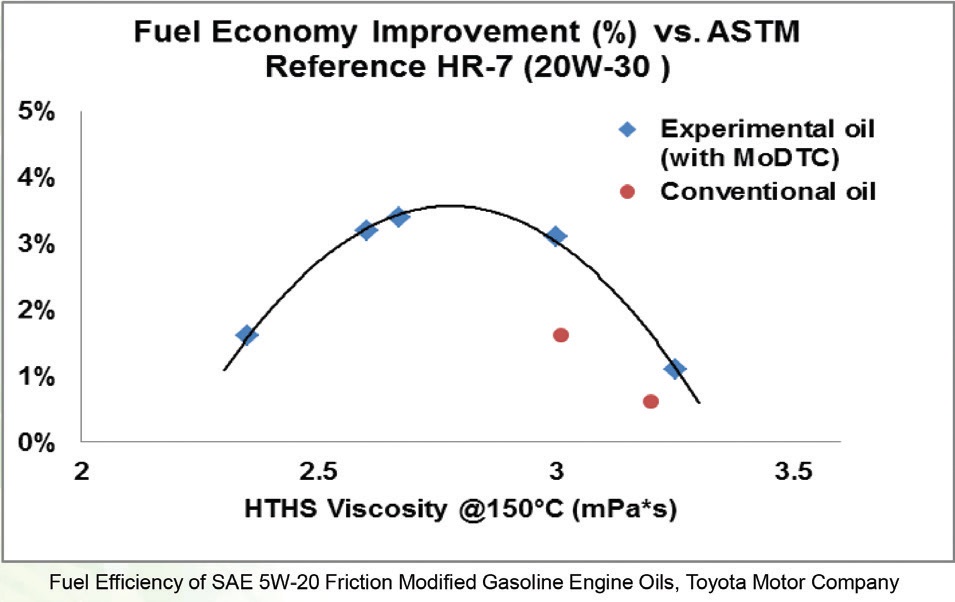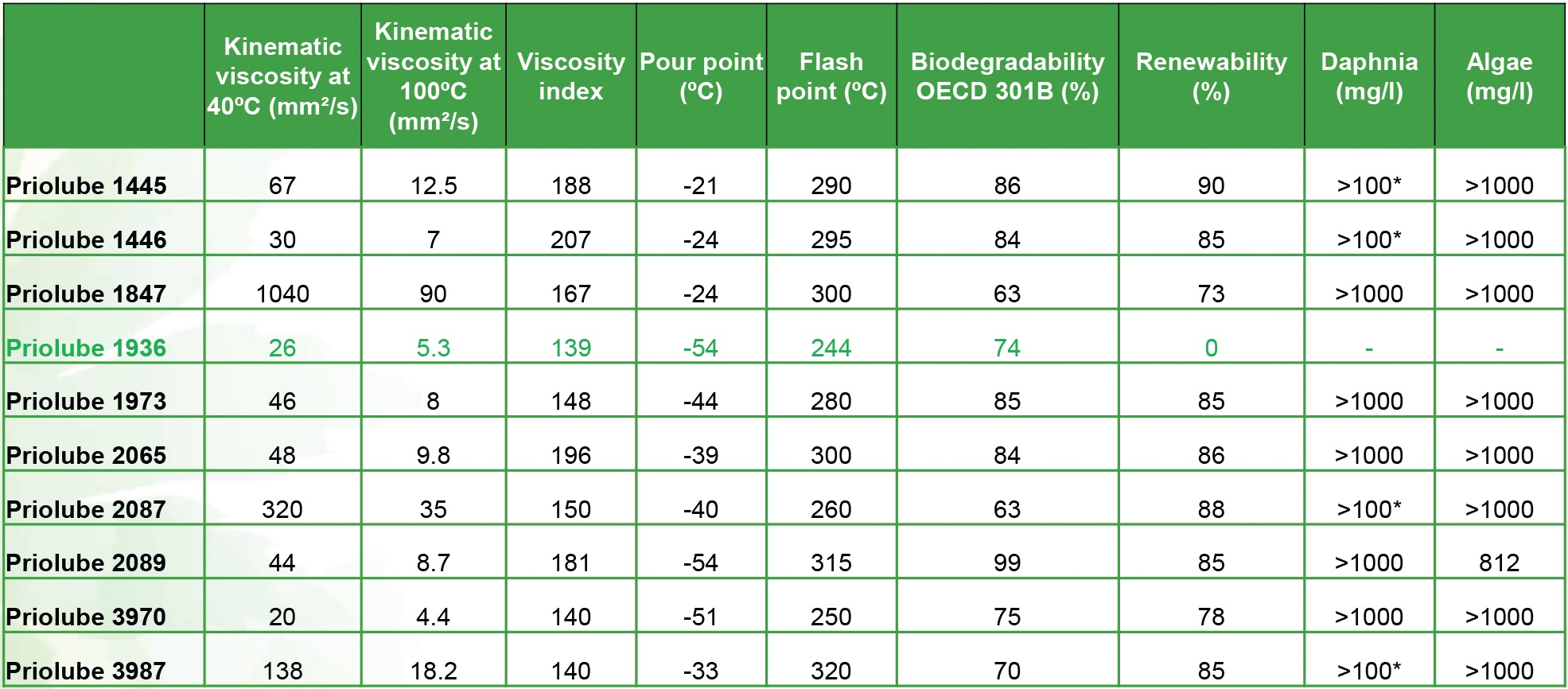Current and evolving regulations continue to drive many of the requirements that lubricants need to address. This article will discuss some changes in regulations that continue to impact needs of lubricants today and in the future.
Fuel Economy and Emissions
Regulations continue to drive the need for lubricants that offer better fuel economy and reduced emissions. The US Corporate Average Fuel Economy (CAFÉ) standards are set to increase from a current requirement of 35.5 miles per gallon to 54.5 miles per gallon by 2025. Although the Trump Administration is considering reductions to the CAFÉ standards, it is possible that a future administration would overturn any change from the current plan. Any reduction in the federal CAFÉ standards is also likely to be met with state regulations from California and other states. The picture in Europe is clearer. EU Carbon dioxide emission requirements continue to tighten. The average carbon dioxide emissions target for new passenger cars will go from the current level of 130 g/km to 95 g/km in 2021. The average carbon dioxide emissions target for light commercial vehicles will go from 175 g/km to 147 g/km in 2020.
The move towards better fuel economy and lower emissions is in part being addressed by a move towards lower viscosity engine oils. There are several examples of this trend. The most recent heavy duty engine oil specification, CK-4, also includes a lower HTHS viscosity version specified as FA-4. FA-4 is designed to provide fuel economy benefit beyond CK-4 due to the lower viscosity. The next passenger car engine oil specification, which is under development as GF-6, will contain a sub-category called GF-6B, which contains a lower HTHS viscosity requirement. Another example of the move towards lower viscosities is that Toyota now specifies use of a 0w16 for the Camry. Pushing the low viscosity envelope even further, Toyota reportedly is considering 0w12 and 0w8 oils.
Lower viscosity oils contribute to fuel economy when the lubricant film is sufficient to prevent surfaces from contacting. Toyota performed a study that showed fuel economy became worse at an HTHS viscosity below 2.6 mPA*s,
see Figure 1. The fuel economy below this viscosity is likely worse due to friction from contacting surfaces that are no longer supported by the lubricant film. Wear concerns exist for low viscosity oils, but the concern extends to other areas too. One area of concern is hybrid cars. The stop-start driving cycle typical for hybrid cars makes them more susceptible to wear. A final example is that Ford recently issued a specification for low phosphorus oils because of wear concerns.
 Figure 1. The Limits of Viscosity Reduction.
Figure 1. The Limits of Viscosity Reduction.
Croda developed the Perfad™ 3000 range of organic friction modifiers based on polymer chemistry. Mini traction machine (MTM) friction curves have been developed that demonstrate the significant reduction in friction that these additives can generate when top treated into a formulated HDDEO at 0.5%. In addition to the significant friction reduction that these additives provide, they also can play a role in reducing wear. Using optical profilometry, we evaluated the wear generated on the ball and disc used in the MTM friction test. The Perfad 3000 series additives reduced the wear on the ball and disc by up to 70%. Reference
Table 1.
 Table 1. Wear data after 6 hours. Mixed sliding/rolling.
Table 1. Wear data after 6 hours. Mixed sliding/rolling.
Looking beyond bench tests, the Perfad 3000 series organic friction modifiers showed positive results in a Sequence VIE engine test, reference
Table 2. In a top treated 0w20, which was not optimized for the Sequence VIE test, Perfad 3050 increased the FEI Sum result vs the baseline oil from 2.41% to 3.10%. Perfad 3006 improved the result even further to 3.36%. It is likely that these results could be improved with further treat rate and additive package compatibility optimization. The Perfad 3000 series polymeric, organic friction modifiers demonstrate friction reduction and improved wear performance. They are additives that should be considered for low viscosity engine oils when wear is a concern.
 Table 2. Sequence VIE Test Results
Changes to Ecolabel and Vessel General Permit
Table 2. Sequence VIE Test Results
Changes to Ecolabel and Vessel General Permit
Both Ecolabel and Vessel General Permit are scheduled to receive plan updates in 2018. The changes to Ecolabel have been established, while the proposal for VGP 2018 is not known at the time of submission of this article.
Ecolabel will move from five “application” categories to four categories characterized by “loss”. An example of this change is that stern tube oils will move from “Category 3”, under the previous scheme, to the “Partial Loss Lubrication” category. Four cycle engine oils were not addressed and could be considered under a separate scheme. No timeline was recommended for implementation of this engine oil category.
Another change to Ecolabel relates to the biodegradability requirements. The biodegradability requirement will change from ultimate biodegradability to readily biodegradable. Readily biodegradable differs from ultimate biodegradability in that it stipulates that the degradation from 10% to 60% take place within a 10 day window. The 10 day stipulation applies only to discrete, well defined chemical compounds. It does not apply to substances that are a mixture of homologous compounds. Products defined as UVCBs (Unknown or Variable Composition) are not subject to the 10 day window. Vegetable oils and synthetic esters made from oleochemical raw materials are examples of UVCBs. The biodegradability limits will change slightly under the new plan. An example of a change is that the readily biodegradable requirement for stern tube lubricants will decrease from >90% to >75%. Stern tube lubricants can now contain up to 25% of inherently biodegradable content which is up from 5% previously. In the previous Ecolabel scheme, products that were biodegradable were assumed to not bioaccumulate. All substances, including biodegradable substances, will need to be assessed for bioaccumulation potential under the new scheme.
One of the more controversial changes to the Ecolabel scheme is the elimination of the renewability requirement. This change will allow the use of base fluids such as low viscosity PAGs, low viscosity PAOs, and synthetic esters derived from petrochemical raw materials which meet the biodegradability and toxicity requirements. Croda’s Priolube™ 1936 is an example of a petrochemically derived, synthetic ester which can now be used that was not eligible under the former Ecolabel requirements. Priolube 1936 might offer a lower cost option when compared to other options of similar viscosity based on renewable raw materials.
The updated Ecolabel plan will require third party verification of origin for palm or palm kernel derived products. Other renewable raw materials will require documentation of the type, source, and origin. If the term “bio” is used, the minimum bio-based carbon content in the final product will need to be 25% by ASTM D6866. To help meet this new requirement, Croda launched a range of esters that are derived from RSPO (Roundtable on Sustainable Palm Oil) certified sources. They contain the “MBAL” suffix and are listed in
Table 3.
 Table 3. Croda Sustainable Palm Esters
Table 3. Croda Sustainable Palm Esters
In addition to the recently developed MBAL products, Croda has an existing range of synthetic ester base fluids that meet the new Ecolabel requirements. These products are biodegradable by OECD 301-B, non-toxic, and non-bioaccumulative. They come in a range of viscosities from ISO VG 22 to ISO VG 1000. A summary of these products is contained in
Table 4.
 Table 4. Croda Ecolabel / VGP Base Oils
Future Developments from Croda
Table 4. Croda Ecolabel / VGP Base Oils
Future Developments from Croda
Croda continues to innovate and develop new products that will help the lubricant industry meet current and future needs. As previously mentioned, Croda developed a line of synthetic esters made from sustainable palm. The products are offered in a range of viscosities from ISO VG 22 to ISO VG 320. Within this range, is Priolube 2089-MBAL, an ISO VG 46 ester that provides significantly better cold flow compared to other biodegradable ISO VG 46 base fluids. Another new product in development is an oxidatively stable, biodegradable ester with a target viscosity of 10,000 cSt @ 40C. This product would extend the range of esters available from Croda for use in Ecolabel and VGP.
Fuel economy and emission regulations are likely to continue to increase the need for low viscosity oils that provide adequate wear protection. Regulations such as Ecolabel and VGP will continue to evolve. Croda will continue to monitor regulation changes and work with customers to understand how these changes impact lubricant needs. We will continue to innovate with new products targeted at helping our customers meet these changing needs.